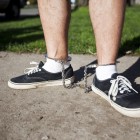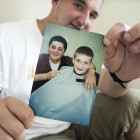
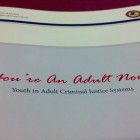
Should 24-Year-Old Offenders be Considered Juveniles?
|
LAS VEGAS -- When the National Partnership for Juvenile Services annual symposium opened, Jason Bowser, a youth service director from Columbus, Ind., told an executive committee that one of the standing committees was focusing on the question of “What is a juvenile?”
It might seem an odd question for a gathering of folks who specialize in working with youth in the juvenile justice system, but really the question, even when not spoken, would be present in training sessions across the three-day symposium held here this week. Nor is it just a hypothetical question because nearly 250,000 young people under the age of 18 end up in the adult criminal justice system every year, according to the National Institute of Corrections report, “You’re an Adult Now: Youth in Adult Criminal Justice Systems.”
Liz Ryan, president and CEO of the Campaign for Youth Justice -- in a session reflecting the “Adult Now” theme -- reminded everyone that New York and North Carolina still consider juveniles to be adults at the ages of 16 or 17 in criminal proceedings, whereas in the rest of the states it’s 18. Ryan said a new report shows that each year 100,000 young people get sent to an adult facility and on any given day approximately 10,000 of them are in an adult facility. Once there, the correction system managers do have rules that treat the juvenile differently from the mainstream adult population. At times that means putting the kids into isolation.

Boy Scout Confidential Files Reveal Patterns of Abuse
|
The Boy Scouts of America (BSA) has come under fire as its “Confidential Files” – a blacklist of adults banned from scouting for sexual abuse or molestation -- have come to light. The files, submitted as evidence in lawsuits under court order, show the BSA banned about 5,000 people from 1947 through 2004. Sexual abuse scandals within other youth-service oriented programs show similar patterns of behavior, including workers dismissing victims, hiding abuse from the public, putting too much faith in adult colleagues and organizations failing to educate staff about abuse. As the problem becomes more public because of scandals such as the Penn State and Catholic Church child sexual-abuse scandals, it has become more apparent that these patterns of behavior are similar among those who mishandle the problem. For the full story via Youth Today, click here.

California’s Passage of Fair Sentencing Act Sets Stage for Rest of Country
|
Last month, California Gov. Jerry Brown signed the Fair Sentencing for Youth Act, state Senate Bill 9. This law creates a process to periodically review the progress of individuals sentenced to life without parole for crimes committed as youth, with the possibility of resentencing. It declares to Californians that their children — even those who have committed serious crimes — are better than their worst acts and, therefore, deserve a second chance at life. This is a value I know many Americans share, and it should be a common characteristic of our state laws. We demonstrated our belief in the inherent redeemability of children when we established a juvenile justice system: a system we made the error of bypassing when a now-disproven theory from the 1980s about juvenile “superpredators” caused us to start throwing away our children. But, as California and the U.S. Supreme Court earlier this year in Miller v. Alabama have shown, the tide is turning.

When the Law Doesn’t Fit the Crime: Lessons from the Blogosphere
|
Practicing criminal law is not rocket science. It’s also not open-heart surgery. But it’s more than just slapping a slice of cheese between two pieces of bread and calling it a sandwich. Although there are occasional dramatic wins and devastating losses, it is often dull and technical. This is part of the reason why earning a law degree requires years of study and why a comprehensive examination must be passed before you can receive a law license.
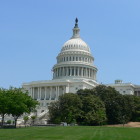
Juvenile Justice Advocates Fear Millions Cut by Sequestration
|
Unless the U.S. Congress agrees on a different budget by the end of this year, stopping a so-called “sequestration” budget, federal spending on juvenile justice programs will fall by around 8 percent. A total $21 million would be sliced out of Juvenile Justice Programs under the federal Department of Justice alone, according to the White House Office of Management and Budget’s report on sequestration. Other spending that has some effect on juvenile welfare, such as state grants from the federal Administration for Children and Families, are also in line for cuts of around 8 percent. “We are kind of bracing ourselves,” said Kimberly Williams, juvenile justice specialist at the North Carolina Governor’s Crime Commission. “Last year we had only about $1.5 million in juvenile justice funding to allocate across the whole state.
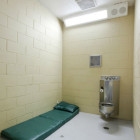
Solitary for Youth: The Fight in Illinois
|
CHICAGO -- Even as national organizations rallied this week to end solitary confinement for incarcerated juveniles across the country, the local branch of American Civil Liberties Union is working with prison officials and the federal court to focus on the issue here. The goal: settle a lawsuit on behalf of 2,217 incarcerated youth with the Illinois Department of Juvenile Corrections over the system’s inadequate services and often-hostile environment. A preliminary agreement calls for curbing the growing practice of solitary confinement in youth centers, which activists say constitutes “torture,” given its potential for causing long-lasting psychological harm. The proposed settlement, which is due for a fairness hearing in federal court in Chicago on December 6, would be the latest victory in a larger movement to end the punitive isolation of youth in custody. In June, Congress held its first hearing on the issue of solitary confinement within U.S. prisons, where roughly 80,000 inmates are in “restricted housing“ at any given time nationwide, according to a 2005 census of adult inmates by the federal Bureau of Justice Statistics.




